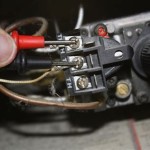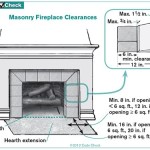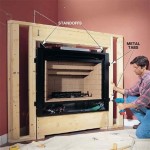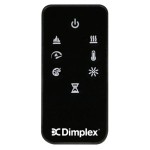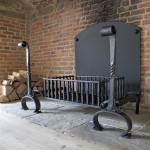Understanding LP Ventless Fireplaces: A Comprehensive Guide
Liquid Propane (LP) ventless fireplaces, also known as unvented fireplaces, represent a heating solution for residential and commercial spaces. These appliances operate without the need for a traditional chimney or flue, offering installation flexibility and potential cost savings. However, understanding their functionality, safety features, and operational considerations is crucial for informed decision-making.
Unlike vented fireplaces that exhaust combustion byproducts to the outside, LP ventless fireplaces release these byproducts directly into the living space. This unique characteristic necessitates rigorous safety standards and responsible operation. The effectiveness and safety of these fireplaces depend heavily on adhering to manufacturer guidelines, local regulations, and understanding the inherent limitations of the technology.
Due to the nature of burning propane, LP ventless fireplaces produce water vapor, carbon dioxide, carbon monoxide, and small amounts of nitrogen oxides. Proper ventilation within the room is paramount to prevent the accumulation of these byproducts to unsafe levels. The oxygen depletion sensor (ODS) is a critical safety feature designed to shut off the gas supply if oxygen levels drop to a predetermined threshold, mitigating the risk of carbon monoxide poisoning.
The operational efficiency of LP ventless fireplaces is often higher than that of vented models. The absence of a chimney prevents heat loss, allowing a greater percentage of the generated heat to warm the room. This can translate to lower heating bills, especially in situations where supplemental heating is desired.
Advantages of LP Ventless Fireplaces
One of the primary advantages of LP ventless fireplaces is their installation versatility. Without the need for a chimney, these fireplaces can be installed in rooms where traditional fireplaces are not feasible. This opens up possibilities for adding a focal point and supplemental heating to various areas of a home or business.
Installation costs are generally lower for ventless fireplaces compared to vented models. The elimination of chimney construction or modification significantly reduces the overall expense. This can make ventless fireplaces an attractive option for budget-conscious consumers.
LP ventless fireplaces often offer higher heating efficiency compared to vented counterparts. The absence of heat loss through a chimney allows for a greater percentage of the fuel's energy to be converted into usable heat, potentially leading to lower energy consumption and reduced heating costs.
Many LP ventless fireplaces are equipped with features such as thermostats, remote controls, and adjustable flame settings, providing users with greater control over the heating output and aesthetic appeal. These features enhance the user experience and allow for personalized comfort settings.
Safety Considerations for LP Ventless Fireplaces
The most important safety consideration with LP ventless fireplaces is ensuring adequate ventilation. The room in which the fireplace is installed must have sufficient air exchange to prevent the buildup of combustion byproducts. Following manufacturer recommendations for room size and ventilation requirements is essential. Many local codes specify minimum square footage and ceiling height requirements for safe operation.
Regular inspection and maintenance are crucial for the safe operation of any LP appliance. This includes checking for gas leaks, inspecting the ODS system, and cleaning the burner assembly. A qualified technician should perform annual inspections to ensure the fireplace is functioning correctly and safely.
Carbon monoxide detectors are mandatory in homes with LP ventless fireplaces. These detectors provide an early warning system in the event of carbon monoxide buildup, allowing occupants to evacuate the premises. Detectors should be strategically placed throughout the home, particularly near sleeping areas, and tested regularly.
It is imperative to strictly adhere to the manufacturer's instructions regarding the operation and maintenance of the fireplace. This includes using the correct type of fuel, avoiding the use of the fireplace for extended periods, and never using it as a primary heating source. Overuse can lead to excessive byproduct accumulation and potential safety hazards.
It is crucial to confirm that the LP ventless fireplace meets all applicable safety standards and regulations. Look for certifications from recognized testing laboratories, such as UL (Underwriters Laboratories) or CSA (Canadian Standards Association). These certifications indicate that the fireplace has been tested and meets specific safety requirements.
Never use the fireplace to burn materials other than propane. Burning wood, paper, or other substances can produce dangerous levels of carbon monoxide and other harmful pollutants. The fireplace is designed specifically for propane combustion, and using other fuels can compromise its safety and efficiency.
Operational Best Practices for LP Ventless Fireplaces
Understanding the oxygen depletion sensor (ODS) is paramount. This safety device continuously monitors the oxygen level in the room. If the oxygen level drops below a certain threshold, the ODS shuts off the gas supply to the fireplace, preventing the production of carbon monoxide. Familiarize oneself with the ODS functionality and ensure that it is working correctly. A yellow or sooty flame can indicate a problem with the ODS or improper combustion.
Before the first use of the fireplace each season, it is advisable to have it inspected and cleaned by a qualified technician. This ensures that the burner assembly is free of debris, the gas lines are properly connected, and the ODS is functioning correctly. Regular maintenance can prevent malfunctions and extend the lifespan of the fireplace.
When operating the fireplace, pay attention to any unusual odors or symptoms, such as headaches, nausea, or dizziness. These could be signs of carbon monoxide poisoning. Immediately turn off the fireplace and ventilate the room if any of these symptoms occur. Seek medical attention if necessary.
Avoid using the fireplace in enclosed spaces, such as bedrooms or small bathrooms, unless they meet the manufacturer's minimum ventilation requirements. These spaces may not have sufficient air exchange to prevent the buildup of combustion byproducts. Using the fireplace in an inadequately ventilated space can pose a significant safety risk.
It is essential to store propane tanks safely and securely, away from heat sources and flammable materials. Follow all local regulations and guidelines for propane storage. Proper storage prevents leaks and explosions, ensuring the safety of the surrounding environment.
Educate all household members or employees on the safe operation and maintenance of the LP ventless fireplace. This includes understanding the importance of ventilation, recognizing the symptoms of carbon monoxide poisoning, and knowing how to operate the fireplace safely. Shared knowledge promotes a safer environment for everyone.
Choose the appropriate size of fireplace for the space being heated. An oversized fireplace can produce excessive heat and potentially lead to discomfort, while an undersized fireplace may not provide adequate heating. Consult with a qualified installer to determine the correct size for the room.
While LP ventless fireplaces offer supplemental heating, it is crucial to remember that they should not be used as the primary heating source for extended periods. Overreliance on the fireplace can lead to excessive byproduct accumulation and potential safety hazards. Use the fireplace sparingly and supplement it with other heating methods as needed.
Always allow the fireplace to cool down completely before cleaning or performing any maintenance. Hot surfaces can cause burns. Disconnect the gas supply before cleaning the burner assembly or performing any repairs.
By understanding the advantages, safety considerations, and operational best practices of LP ventless fireplaces, individuals can make informed decisions about their use and ensure a safe and comfortable heating experience. Responsible operation and adherence to established safety guidelines are paramount for maximizing the benefits and minimizing the risks associated with these appliances.

Radiance Vent Free Gas Stove The Place

50 Free Standing Ventless Gas Fireplace Visualhunt
:max_bytes(150000):strip_icc()/ventless-gas-fireplaces-4160746-hero-f9d4bdcd9bd446eb84406de306f790ba.jpg?strip=all)
How To Pick Out A Ventless Gas Fireplace

The Debate Continues Are Ventless Fireplaces Safe

Ventless Gas Fireplace Propane

Vent Free Inserts White Mountain Hearth

Pleasant Hearth 27 500 Btu 42 In Convertible Ventless Propane Gas Fireplace Heritage Vff Ph26lp 2h2 The Home Depot

Hearthsense Liquid Propane Ventless Gas Tower Corner Fireplace 20 000 Btu Cherry Finish 170089 The Home Depot

Considering A Ventless Gas Fireplace Here S What You Need To Know Bob Vila

Bluegrass Living 55 In Black Ventless Liquid Propane Gas Fireplace The Fireplaces Department At Com

